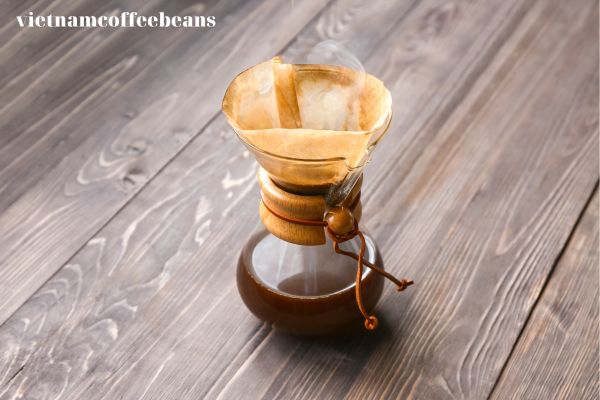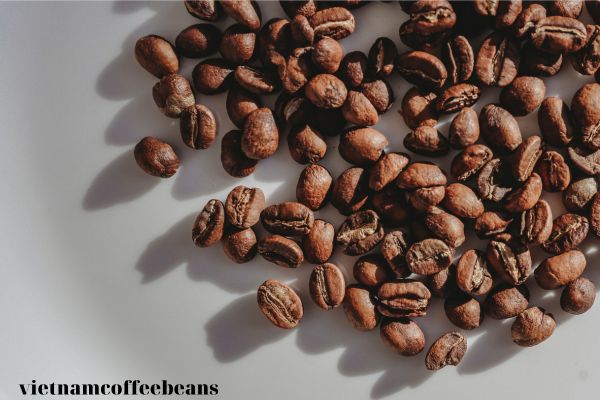Picture this: it’s a lazy Sunday morning and the aroma of freshly brewed coffee fills the air. As I sip my cup of percolator coffee, I can’t help but marvel at its rich and robust flavor. But have you ever wondered about the secret behind that perfect cup? It all comes down to the percolator coffee ratio.
In this article, we will delve into the world of percolator brewing and uncover the importance of finding the right coffee-to-water ratio. With precision and expertise, I will guide you through this essential aspect of brewing that can make or break your morning brew.
How do you know how much water and coffee to use? The answer is to find the right balance in coffee brewing ratios.
Whether you prefer a strong and bold cup or a milder, more balanced taste, understanding how to adjust the ratio for your personal preference is key. Alongside some valuable tips for achieving that perfect cup, we will also explore ways to enhance your overall percolator coffee experience.
A percolator coffee ratio refers to the amount of coffee grounds used per cup of water when making coffee in a coffee percolator. This type of coffee maker can be either a stovetop percolator or an electric percolator.
To make percolated coffee, the grounds are placed in a basket and hot water is circulated through them using a stovetop or electric heat source. The roast of the coffee and the amount of grounds used in a percolator can affect the strength and flavor of the final brew.
One significant aspect of this method is getting the percolator coffee ratio right, which can be tricky for beginners. But don’t worry, we’ve got you covered with the ultimate guide to achieving the perfect brew. While you’re at it, learn what you need to know about V60 coffee, which is a pour-over method that involves using a conical filter to brew coffee.
So grab your favorite mug and join me as we unravel the mysteries of the percolator coffee ratio.
Key Takeaways
- It relies on finding the right coffee-to-water ratio for a perfect cup.
- Different types of percolators, such as stovetop and electric versions, are available.
- Measuring tools like scales or scoops are needed for accurate coffee-to-water ratios.
- Experimenting with ratios and exploring different bean varieties enhances the percolator coffee experience.
Percolator Coffee Ratio: Understanding the Basics of Percolator Brewing to make coffee

If you want to make this coffee, it’s important to understand the basics of brewing with a percolator. Percolators have been around for decades and are known for their unique brewing techniques.
There are different types of percolators, including stovetop and electric versions. Stovetop percolators have a chamber at the bottom where water is heated, creating steam that rises through a tube and filters through the coffee grounds in a basket above.
The brewed coffee then drips back down into the chamber, ready to be served. Electric percolators work similarly but use electricity to heat the water instead of a stovetop flame.
The optimal coffee ratio for moccamaster, a popular drip coffee maker (see mastering drip coffee ratio), is 1:18, according to the Specialty Coffee Association of America (SCAA) and the European Coffee Brewing Centre (ECBC). This means that for every 55 grams of fresh coffee beans, you should use 1 liter of water.
However, this ratio may not work well for percolated coffee, as the brewing method is different and may require more or less grounds depending on your preference.
Some variations of percolator coffee may require different ratios, depending on the type of coffee and the brewing method.
For example, Turkish coffee, which is made by boiling finely ground coffee with water and sugar in a small pot called a cezve, typically uses a much higher ratio of coffee to water than other methods. A common Turkish coffee water to coffee ratio is 1:5, or 20 grams of coffee per 100 milliliters of water. This results in a very strong and thick brew that is often served with foam on top.
For those who love adventurous brewing, the Cowboy Coffee Ratio is a great option. Cowboy coffee is brewed over an open flame while camping, and it’s known for its bold flavor.
Understanding these different percolator types and their brewing methods will help you achieve the perfect cup every time.
Finding the Right Coffee-to-Water Ratio
When brewing your perfect cup, you’ll want to make sure you strike the right balance between the rich essence and revitalizing liquid. One key aspect of achieving this balance is finding the right coffee-to-water ratio for your percolator brew.
The coffee strength can greatly vary depending on how much coffee you use in relation to the amount of water. To help you understand this better, here is a table that shows different ratios and their corresponding outcomes:
| RATIO | COFFEE STRENGTH |
| 1:15 | Mild |
| 1:12 | Medium |
| 1:10 | Strong |
| 1:8 | Bold |
To accurately measure these ratios, you will need measuring tools such as a scale or a scoop. A scale allows for precise measurements in grams, while a scoop typically measures around one tablespoon of coffee grounds. Experimenting with different ratios will allow you to find the perfect balance and achieve your desired coffee strength.
A percolator coffee brewing guide can provide more detailed instructions on how to use a percolator to brew coffee, including how much coffee to use and how long to percolate the coffee.
One of the key factors to consider is the optimal golden ratio for coffee, which is the amount of coffee grounds to water that produces the best taste and aroma.
Adjusting the Ratio for Personal Preference
To truly customize your brew, it’s all about finding that sweet spot in the coffee-to-water ratio that perfectly suits my taste buds. Personalized brewing is a journey of experimenting with ratios to achieve the desired flavor profile. It requires precision and attention to detail.
When adjusting the coffee-to-water ratio for personal preference, start by understanding the basics. The general recommendation is usually 1:15 or 1:16, meaning one part coffee to fifteen or sixteen parts water. However, this can vary based on personal taste preferences.
For a stronger brew, I might increase the amount of coffee grounds while keeping the water measurement constant. Conversely, for a milder flavor, I would decrease the amount of coffee grounds. This experimentation allows me to find my preferred balance between strength and smoothness.
Remember, each person’s palate is unique, so don’t be afraid to explore different ratios until you discover your perfect cup of this coffee.
Tips for Brewing the Perfect coffee Percolator Cup

Crafting the ideal cup of java is an art, and these tips will guide you towards brewing perfection. When it comes to brewing this coffee, there are a few key techniques to keep in mind. First and foremost, choosing the right grind is crucial.
For percolators, a medium grind works best as it allows for optimal extraction without over-extracting or under-extracting the flavors. This ensures a balanced and flavorful cup of coffee. Additionally, pay attention to your water-to-coffee ratio.
The general rule of thumb is 1 tablespoon of coffee grounds per 6 ounces of water, but you can adjust this according to your personal taste preferences. Experiment with different ratios until you find the perfect balance that suits your palate.
If you’re a coffee lover, you know the importance of a perfectly brewed cup of joe. The percolator coffee ratio can make all the difference, and getting it just right can be a challenge. But fear not, because the ultimate guide to moka pot coffee ratio is here to help.
By mastering these brewing techniques and honing in on the right grind, you’ll be well on your way to enjoying a consistently delicious cup of this coffee every time.
Enhancing Your Percolator Coffee Experience

Take your percolator coffee experience to the next level by exploring different flavor profiles and experimenting with various brewing techniques. One way to enhance your coffee experience is by comparing it to drip coffee.
While drip coffee tends to have a cleaner taste, percolator brewing offers a richer and more robust flavor. The boiling water in the percolator extracts more oils from the coffee grounds, resulting in a bolder cup of joe.
Another aspect to consider is the type of coffee beans you use for percolator brewing. Different varieties, such as Arabica or Robusta, can bring out unique flavors and aromas in your brew. Experimenting with different bean origins and roasting levels will allow you to find your perfect cup of percolated goodness.
So go ahead, try new techniques and explore different bean varieties – it’s all part of elevating your coffee experience!
Frequently Asked Questions
Conclusion
In conclusion, mastering the art of percolator brewing is like conducting a symphony. The coffee-to-water ratio serves as the conductor, determining the strength and flavor notes of each cup. Just as a skilled musician adjusts their instrument to achieve harmony, we too can fine-tune our coffee experience by adjusting this ratio to suit our personal tastes.
With precision and attention to detail, we can create a symphony of flavors that will elevate our morning routine to new heights. So let us embrace the percolator’s potential and embark on a journey of exquisite coffee enjoyment.
By understanding your French press ratio and experimenting with different ratios, you can achieve a delicious and satisfying cup of percolator coffee every time.
Percolator coffee and AeroPress coffee are both great ways to enjoy a delicious cup of joe. By understanding the percolator coffee ratio and the optimal ratio for aeropress coffee, you can make the most out of these brewing methods and discover new flavors and aromas.






